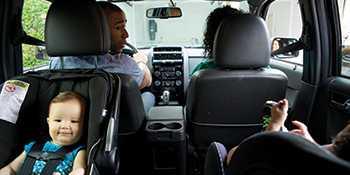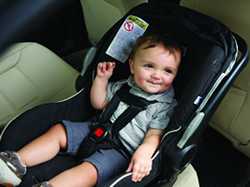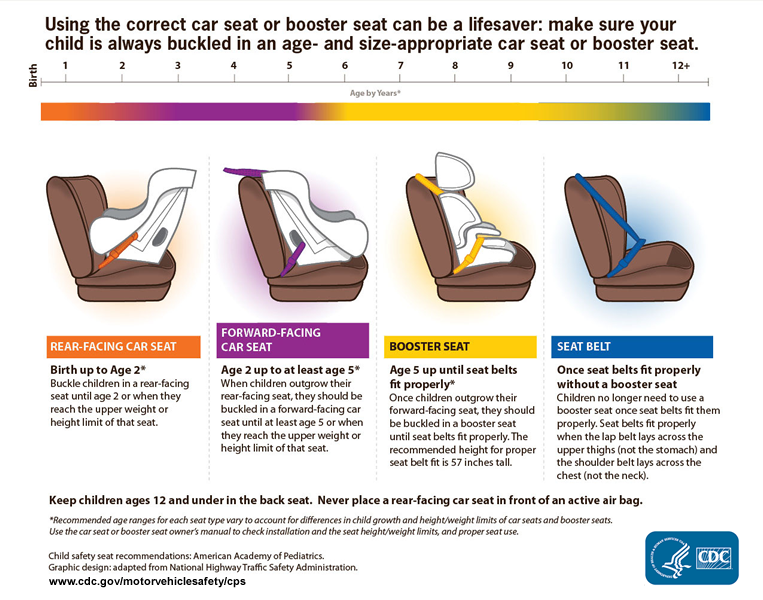Know the stages
Make sure children are properly buckled up in a car seat, booster seat, or seat belt, whichever is appropriate for their age, height and weight.
Birth up to Age 2: Rear-facing car seat.
For the best possible protection, infants and children should be buckled in a rear-facing car seat, in the back seat, until age 2 or when they reach the upper weight or height limits of their particular seat. Check the seat’s owner’s manual and/or labels on the seat for weight and height limits.
Age 2 up to at least Age 5: Forward-facing car seat.
When children outgrow their rear-facing seats they should be buckled in a forward-facing car seat, in the back seat, until at least age 5 or when they reach the upper weight or height limit of their particular seat. Check the seat’s owner’s manual and/or labels on the seat for weight and height limits.
Age 5 up until seat belts fit properly: Booster seat.
Once children outgrow their forward-facing seat, (by reaching the upper height or weight limit of their seat), they should be buckled in a belt positioning booster seat until seat belts fit properly. Seat belts fit properly when the lap belt lays across the upper thighs (not the stomach) and the shoulder belt lays across the chest (not the neck). Remember to keep children properly buckled in the back seat for the best possible protection.
Once Seat Belts Fit Properly without a Booster Seat: Seat Belt
Children no longer need to use a booster seat once seat belts fit them properly. Seat belts fit properly when the lap belt lays across the upper thighs (not the stomach) and the shoulder belt lays across the chest (not the neck). For the best possible protection keep children properly buckled in the back seat.
Install and Use Car & Booster Seats Properly
Install and use car seats and booster seats according to the seat’s owner’s manual or get help installing them from a certified Child Passenger Safety Technician.
Find a child passenger safety technician.
Seat Children in the Back Seat
Buckle all children aged 12 and under in the back seat.
Don’t Seat Children in Front of an Airbag
Airbags can kill young children riding in the front seat. Never place a rear-facing car seat in front of an air bag.
Seat Children in the Middle of the Back Seat
Buckle children in the middle of the back seat when possible, because it is the safest spot in the vehicle.14
Use Proper Restraints Every Trip
Buckle children in car seats, booster seats, or seat belts on every trip, no matter how short.
Parents and Caregivers: Always Wear a Seat Belt
Set a good example by always using a seat belt themselves.


 ShareCompartir
ShareCompartir






